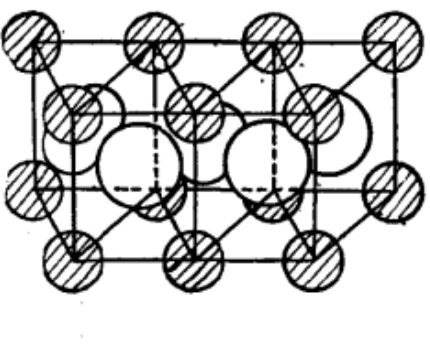Professional industry ceramic supplier, silicon nitride, silicon carbide, aluminum nitride and any other kinds of ceramics.
Borax is added to food to prevent corrosion, increase elasticity and swell. Borax is very harmful to human health. The human body can decompose and excrete a small amount of toxic substances by itself, but after borax enters the body, it is converted into boric acid through the action of gastric acid, and boric acid is accumulated in the human body. Although the amount of intake is small each time, the accumulation becomes more. Continuous intake will accumulate in the body, hindering the action of digestive tract enzymes, causing loss of appetite, indigestion, inhibiting the absorption of nutrients, promoting fat decomposition, and increasing weight The symptoms of acute poisoning are so-called boric acid disease such as vomiting, diarrhea, erythema, circulatory system disorder, shock, and coma. The boron in borax has an inhibitory effect on the DNA synthesis of bacteria, but at the same time it can also cause damage to the DNA in the human body. Boron is a limited element in the human body. If the human body takes in too much boron, it will cause accumulated poisoning of multiple organs. The toxic dose of borax for adults is 1 to 3 grams, the lethal dose for adults is 15 grams, and the lethal dose for infants is 2-3 grams. Therefore, my country's "Food Hygiene Law" and "Food Additive Hygiene Management Measures" explicitly prohibit the use of borax as a food additive. However, because borax has higher requirements for taste food, especially some meat products, it can significantly improve its "quality", and because borax has weak anti-corrosion power, it is often used in large quantities.
Overview of iron boride FeB powder
Iron boride (FeB) is a gray powder and is insoluble in water. The arrangement of iron boride is a zigzag chain, iron atoms are located at the corners of the triangular prism, and boron atoms are located in the center of the triangular prism and are connected in the zigzag chain in the form of covalent bonds.

The melting point of iron boride is 1652℃ and the density is 7.15g/mL. It is dissolved in dilute and concentrated nitric acid, concentrated and 1:1 hydrochloric acid solution, 1:1 H2SO4 and HClO4, μeff=1.1μB. It exists in α-form at low temperature and β-form with the same Tc (602K) at high temperature. With the change of magnetic moment, it is transformed from α to β type. Both can form ferromagnets. Reacts with boiling water. Hard texture, refractory, good corrosion resistance.
FeB is harder than Fe2B, but it is more fragile and more likely to break on impact. Feb is a soft ferromagnetic compound that becomes paramagnetic at temperatures above 325°C (617°F). FeB powder begins to react with ambient oxygen in the air above 300°C. Although a large amount of FeB material is expected to remain stable in air, FeB is a very hard compound (measured by Vickers indentation at 15-22 GPa), which is not ideal for bonding steel because of the FeB layer Fragile and easy to peel off steel or iron.
FeB single crystals are occupied by bond domains. The binding domain is parallel to the easy axis and perpendicular to the hard axis. The structure of the closed domain is described as "stars and twists". The key field has a clear direction on the boundary of the home field, while the closed field is diamond-shaped.
Application of iron boride FeB powder
Iron-based coatings have recently received attention due to their mechanical, friction, and corrosion resistance. Compared with the types of ceramics or cermets previously used by humans, iron-based materials are relatively cheap, less strategic, can be produced economically by a variety of thermal methods, and are easy to manufacture and process.
Iron boride is generally used to improve wear resistance, corrosion resistance, wear resistance and oxidation resistance.
Iron boride is used in oil and gas refining, chemical extraction, automotive, agriculture, stamping, textile extrusion and injection molding industries.
Iron boride FeB powder price
The price of FeB powder of iron boride will vary randomly with the production cost of FeB powder of iron boride, transportation cost, international situation, exchange rate, supply and demand of FeB powder of iron boride market. Tanki New Materials Co., Ltd. aims to help various industries and chemical wholesalers find high-quality, low-cost nanomaterials and chemicals by providing a full set of customized services. If you are looking for iron boride FeB powder, please feel free to send an inquiry to get the latest price of iron boride FeB powder.
Iron Boride FeB Powder Supplier
As a global supplier of iron boride FeB powder, Tanki New Materials Co., Ltd. has extensive experience in the performance, application and cost-effective manufacturing of advanced engineering materials. The company has successfully developed a series of powder materials (titanium diboride, silicon hexaboride, molybdenum boride, iron boride), high-purity targets, functional ceramics and structural devices, and provides OEM services.
| Iron Boride Properties | |
| Other Names | ferric boride, iron monoboride, ferrous boride, |
| iron(II) boride, FeB powder | |
| CAS No. | 12006-84-7 |
| Compound Formula | FeB |
| Molecular Weight | 66.656 |
| Appearance | Gray to Black Powder |
| Melting Point | 1300-1500℃ |
| Boiling Point | N/A |
| Density | 7.15 g/cm3 |
| Solubility in H2O | Insoluble |
| Exact Mass | 66.944243 |
